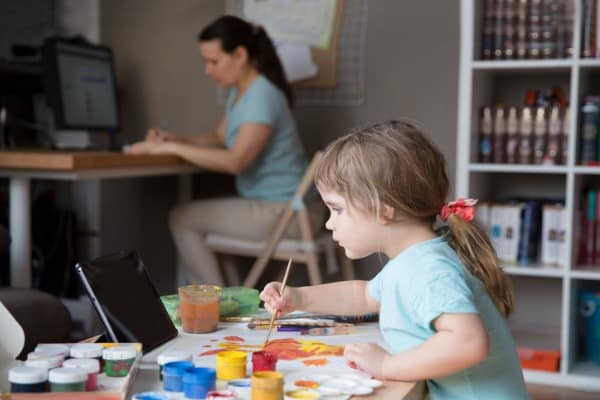
If you have kids of ages two to four, want to teach them preschool at home but are not sure where to start, then this article will help you to accomplish this in an easy and rewarding manner.
At this age, it is not appropriate to have your child work on boring worksheets sitting at a table or memorising facts.
Children need activities and opportunities to learn daily life skills. Unlike traditional schooling, homeschooling allows you to follow your child’s interests — reading, sensory activities, field trips, and crafting among many others.
Preschool at home can be easily accommodated and integrated with your daily schedule.
At a basic level, your goal should be to create excitement and love for learning, which will then last for a lifetime.
Give your children ample opportunities to perform simple chores like:
- helping out in the kitchen
- calming a crying sibling
- dressing up
These, along with discussions on faith and family rules, will prime your preschooler to grow into a loving, disciplined, and companionable adult.
It is education through play that develops critical thinking skills and problem solving techniques in a child.
If you’re still looking for further information after reading this article, a dedicated childcare facility like Gowrie child care may be useful.
Here are some helpful ideas:
Quick Navigation
Hands-on activities
These include:
- stacking blocks
- ladder climbing
- bead threading
- dressing
- jumping/rolling
As your children perform these, observe them to identify areas that still need more practice at a later stage.
Hands-on activities promote gross and motor skills, which are essential for the physical development of your child.
Increase the skill level slowly and gradually, monitoring your child all the while so that sudden changes do not frustrate them.
But once in a while, push them out of their comfort zone to see how they react to such challenges. Your encouragement and positive reinforcement can do wonders here!
Reading and singing
It’s often difficult to get a preschooler to read. To a child, reading can be the most boring thing in the world.
To work around this, spread out a few children’s books in areas of your house that you and your children spend the most time in.
Examples include the bedroom and the living room.
Your goal is to just introduce your child to reading — get them to take the first step.
Once their interest develops, they’ll gladly embark on a lifelong journey of learning.
Many parents neglect singing when it comes to preschooling. Scientists believe singing can improve respiratory and cardiac functioning in children and have numerous psychological benefits such as a healthy self-esteem.
You don’t have to sing romantic songs with your child — there are plenty of educational poems out there that are definitely worth a shot.
Scheduling
Many parents become too rigid with scheduling when it comes to homeschooling.
While planning for thirty-minute sessions is a good idea, don’t force your preschooler into a strict routine from day one.
See what works best for you and your child and work slowly towards a schedule.
If you’re facing too much difficulty with scheduling, consider joining a homeschool co-op, which will not only help you find a good schooling schedule, but also help your child develop social sharing skills.
Co-ops can be especially helpful during the pandemic, which has starved children of social interaction.
It’s also important to allow flexibility in the curriculum. Each child has a different personality and there’s no one-fit-for-all curriculum when it comes to homeschooling.
What worked with a previous kid may not work for his sibling and parents who don’t recognize this will become frustrated very quickly.
Essential items
While you don’t need a lot of items for homeschooling, it’s good to have some of the following basic items to ensure effective learning:
- Children's books
- Papers (lots of them!)
- Crayons (or color pencils)
- Markers
- Common household items for sorting and counting
- Alphabet and number manipulatives
- Children’s scissors
- Glue
- Paint with brushes
Learning space setting

As the major objective of pre-schooling is to create an environment for learning through exploration and playing, it is essential to plan carefully where you want to be most of the day.
But keep in mind that preschool activities will switch between indoors and outdoors.
You may choose to set up home preschool in your main living area/dining room or a dedicated room/playroom, and both options have their benefits and disadvantages.
Using the living area for preschool can be helpful if you need to take care of multiple children.
For example, you may want to supervise one doing preschool activities while feeding the other. It is easy to clean as a sink is nearby, and activities could be easily transformed into snack time.
You could also manage other household tasks while supervising preschool activities.
The downside to using a living area as preschool is that you can sometimes feel that preschooling is a continuous activity without a break!
Advantages of using a dedicated room (or an existing playroom) for preschool include:
- incomplete projects could be left out for another day
- all learning materials are out of sight when not pre-schooling, allowing you to take your mind off it
The disadvantages include lack of a sink nearby for cleaning up and an inability to carry out painting or play dough activities due to incompatible flooring.
In general, the learning setting should have shelves to display books, flooring that is easy to clean, and a comfortable spot for reading together!
